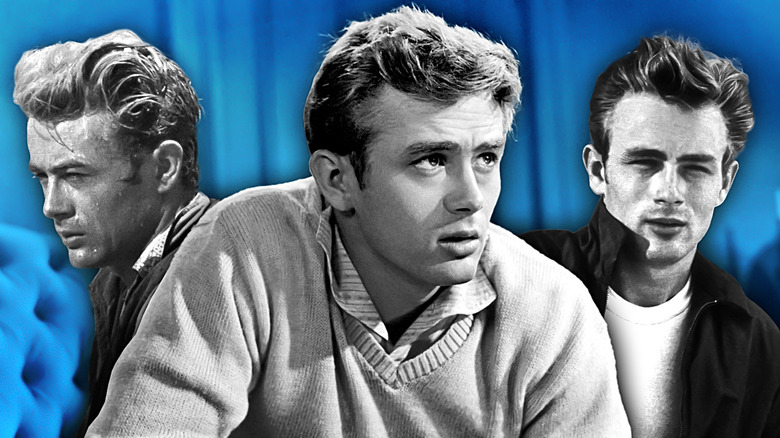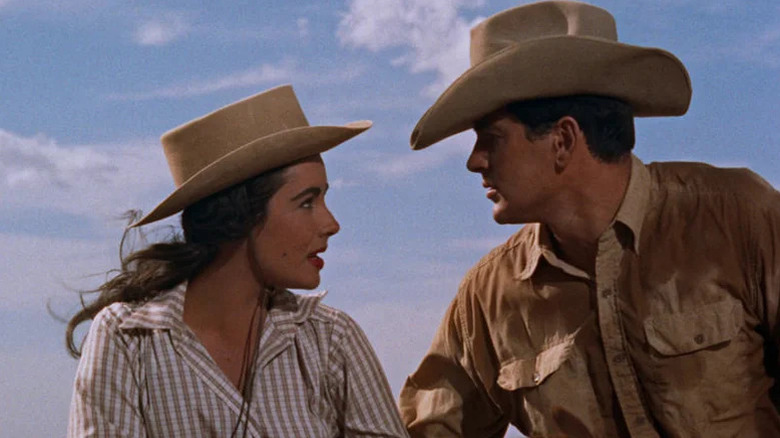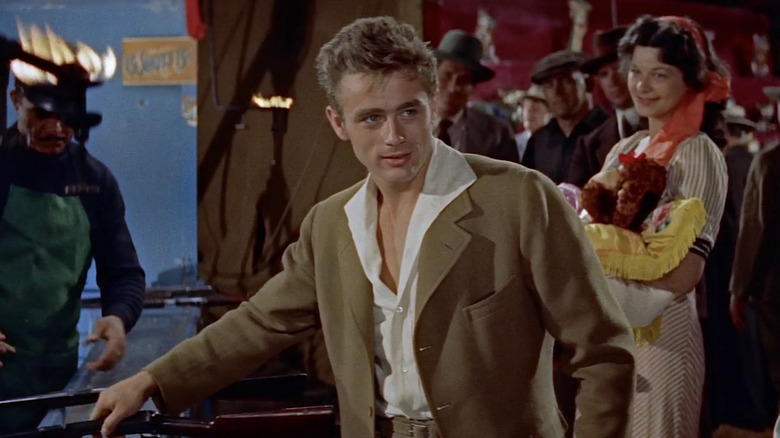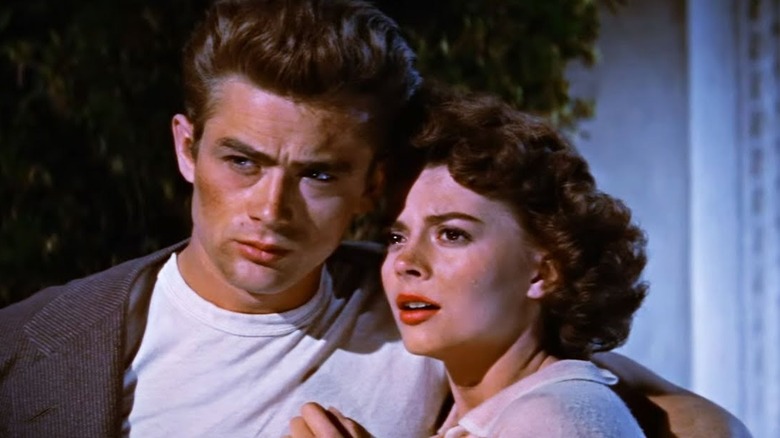
Static Media
Since James Dean's life was tragically cut short in a car accident when he was only 24 years old, he only ended up starring in three movies. Be that as it may, all three films has left an indelible mark on popular culture. With his narrow eyes and a cigarette dangling from his pursed lips, combined with the tight jeans and white shirts bursting from his wiry frame, Dean quickly created a brooding mystique that always seemed destined for Hollywood infamy.
Dean himself was a Method actor bad boy in the vein of Marlon Brando, though less brutish and more melancholic and sensitive. Beneath his tough-guy exterior, Dean also carried an inner weight that made his performances so achingly vulnerable. He was a handsome, tragic hero with a world-weary maturity who not only captivated 1950s audiences, but generations of moviegoers that followed as well. Let's rank the three movies that made him such a star.
3. Giant (1956)

Warner Bros.
As the title indicates, George Stevens' "Giant" is a sprawling, over three-hour epic about a wealthy Texas rancher and new wife, an East Coast aristocrat, who has difficulty assimilating to her new rural surroundings. The film buckles under the weight of its length and soap opera-style melodramatics as we follow the tensions between cattle ranchers and oil barons across decades.
While we may be taken aback by the star power of Rock Hudson and Elizabeth Taylor as Leslie and Jordan Benedict, the story of a billionaire vying for his land and hungry for more is a snooze — especially considering the class divide nowadays. Dean, meanwhile, is barely in "Giant" as a poor ranch hand who finds a fortune in oil, but he creates a memorable character with a youthful optimism who cannot overcome his emotional demons.
What "Giant" does well, and why /Film writer Danielle Ryan considers it one of the best movies set in Texas, is its depiction of racial tension amongst the Mexican and American characters, particularly when the Benedicts have a biracial grandchild.
2. East of Eden (1955)

Warner Bros.
Directed by Elia Kazan, "East of Eden" is based on John Steinbeck's novel and the Bible story of Cain and Abel. In 1910s California, Cal and Aron are a pair of competitive brothers who uncover a secret about their mother that shatters their family.
Dean has an intensity that leaps off the screen here, one that feels even more potent than in "Rebel Without a Cause." In the scenes with his father, Adam, Cal's whole being vibrates with desperation for just an ounce of the patriarch's love and respect. We can also see the wounded little boy that lives inside of Cal and constantly seeks approval. This tension completely melt away from Dean's physicality during the scenes with Abra, who represents a possibility of pure love for Cal.
Visually, "East of Eden" has a nostalgic tenderness and beauty, especially in the sun-drenched exteriors of a flower-filled field and the vibrant nighttime carnival scenes. This lyrical drama details family dynamics and emotions that are as old as human history itself.
1. Rebel Without a Cause (1955)

Warner Bros.
"Rebel Without a Cause" became iconic because it was one of the first films to take the conflicts of teenagers seriously. The film follows Jim, Judy, and Plato, all teens who are struggling with their parents' emotional abandonment and feeling lost. The film's three young actors — Dean, Natalie Wood, and Sal Mineo — all deliver electric performances. They have a combination of innocent fragility and heavy-heartedness that is fascinating to watch.
Dean, especially, articulates the frustration that comes with becoming an adult and trying to understand the generation that came before you. He is at his most gripping during the scene when Jim begs his father and mother, "You, you say one thing, he says another, and everybody changes back again!" Dean's performance, and the entire film itself, expresses that raw confusion of being young when your emotions feel overwhelming, the weight of the world seems too heavy, and your future looks bleak.
Director Nicholas Ray's use of Technicolor makes the cinematography pop just as much as the emotions — from the bright reds of Dean's jacket and the shine of the hot rods to the Los Angeles cityscape viewed from the top of the Griffith Observatory. "Rebel Without a Cause" may perfectly capture the 1950s zeitgeist, but its depiction of teenage resistance and disillusionment still resonates today. It's an undeniably bold film with a lot to say and demands to stand out. That Dean will forever be a symbol of rebellious youth thanks to "Rebel Without a Cause" remains a beautiful, cruel irony.








:quality(85):upscale()/2025/01/14/931/n/1922564/0dc333a96786d52b2c80c7.95468346_.jpg)
 English (US) ·
English (US) ·